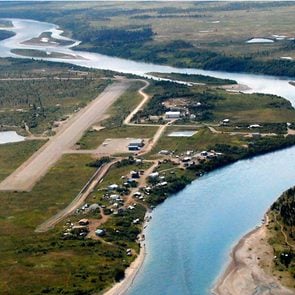This Expert Skier Survived Two Avalanches After Hitting the Slopes
Updated: Dec. 08, 2022
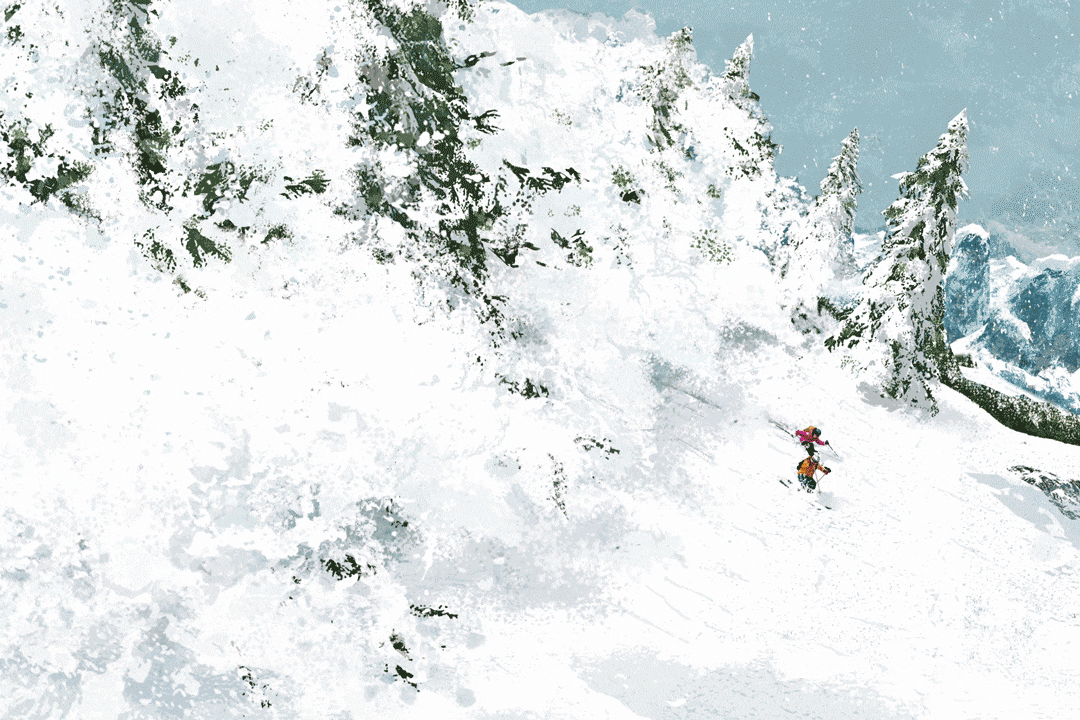
Caught in a massive avalanche and buried alive under a blanket of snow, Ken Scott knew death was just a matter of time.
Ken Scott kicked off the covers and leapt out of bed at his home in the Rocky Mountain town of Mullan, Idaho. It was 6 a.m. on January 7, 2020, and he was on a mission: He’d just heard on the radio that the nearby Silver Mountain Resort had been blessed with nearly a foot and a half of new snow. A self-confessed ski addict who’d worked in the industry for the past 30 years as a ski patroller and equipment salesperson, he didn’t want to miss this big dump of fresh powder. These conditions are what skiers live for—even veterans like Scott, who, at 55, still skied 100 days a year. His wife, Ruth Scott, also loved hitting the slopes, but today she had other plans, so he ventured off alone.
When Scott reached Silver Mountain’s locker room, he bumped into his friend Rebecca Hurlen-Patano, 58, a former ski instructor who had also been a regular on these slopes for more than two decades.
“Can you believe it?” she said as they changed into their boots. “Sixteen inches! Are you ready?”
As if she had to ask.
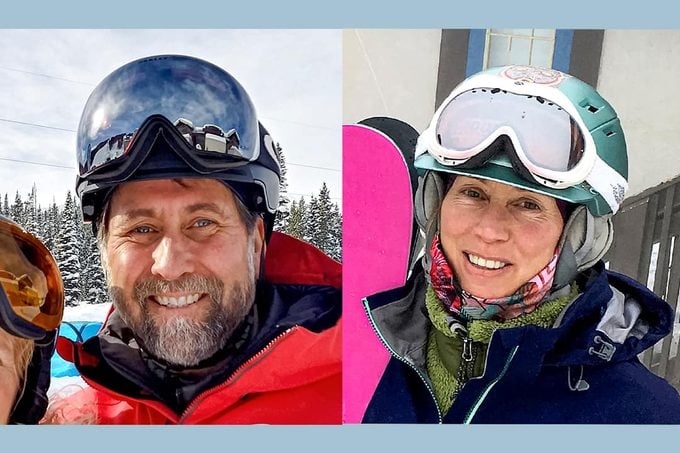
For the next hour the pair skied on various runs under a lightly overcast sky, making fresh tracks. They were both in a playful mood, bantering as they tackled the steep runs. Once, while heading up in the lift, they noticed that the 6,200-foot Wardner Peak, home to the challenging expert-level trail named 16-to-1, was now open. It had been closed all season over concerns that skiers might cause an avalanche. But that morning, patrols had set off 13 explosive charges on the peak to clear loose snow from its upper slopes, reducing the chance of a snowslide.
“What do you think?” asked Hurlen-Patano.
“Let’s go for it!” Scott replied.
Avalanche on 16-to-1
There’s no direct chairlift to 16-to-1, so skiers reached it by traversing through deep snow and trees. Along the way, Scott and Hurlen-Patano recognized other Silver Mountain regulars also heading for the run. They waved to Warren Kays, 67, Bill Fuzak, 62, and Carl Humphreys, 58. Everyone was excited to be the first this season to ski the steep, powder-rich run.
When they reached the slope’s crest, Hurlen-Patano excitedly looked back at Scott. The huge, toothy grin on his bearded face was all the incentive she needed. She pointed her skis downhill and took off.
Almost immediately, the snow beneath her gave way. In a millisecond, she realized what was happening. “Avalanche!” she yelled to Scott, who was not far behind.
He responded, fear in his voice, “This is happening!”
Instantly, both were pummeled by heavy slabs of snow that would carry them some 500 feet down the mountain. Hurlen-Patano felt it enclose her, moving quickly up her back and over her shoulders, then heavy against her neck. Snow filled the space in front of her and piled up around her thighs. She was engulfed.
Scott, too, was swept downhill when his feet were ripped out from under him. He remembered the avalanche survival lessons he’d learned while working ski patrol: Keep your head up. Try to swim. Stay on top of the snow. But the snow was too powerful and it tumbled him like a load of clothes in a dryer.

When he finally came to rest, he was lying on his left side and almost completely buried, skis and poles still attached. But through the foot or so of snow on top, he could see daylight, and he could move his right hand and forearm. In his cocoon, he cleared snow from his face and told himself, It’s a shallow burial. I can breathe. I am alive. Stay composed.
Hurlen-Patano had ended up partially buried in a tight squatting position. She scooped snow away and managed to pull herself out. Then her rescue training kicked in. She looked uphill to where she’d last seen Scott and shouted his name. She was relieved when his pole poked through the snow in response. He was about 10 feet away. She also called to fellow skiers Fuzak and Kays. They were farther down the slope, partially buried, but were able to respond to her. She had no idea where Humphreys was.
Scott couldn’t move much under the weight of the snow. Still, he felt confident he could survive this: Hurlen-Patano now knew where he was and rescue was just a matter of waiting. With his free right hand, he cleared about a foot and a half of snow above his face for breathing room. This was crucial; he knew that breathing his exhaled carbon dioxide for too long was poisonous. So, as he had been taught back at ski patrol, he focused on oxygenating—taking small breaths to conserve oxygen—thinking positive thoughts, and staying calm.
As adrenaline coursed through her body, Hurlen- Patano knew she had to reach the other skiers and uncover them quickly so they could breathe. She focused on these thoughts: We are alive. Be fast. Stay in control.
It had been several minutes since the avalanche had struck. Because she knew Scott was okay, Hurlen-Patano first crawled downhill to help Fuzak, who was buried up to his neck. As she knelt above him, scooping snow from his face, the air around her suddenly exploded.
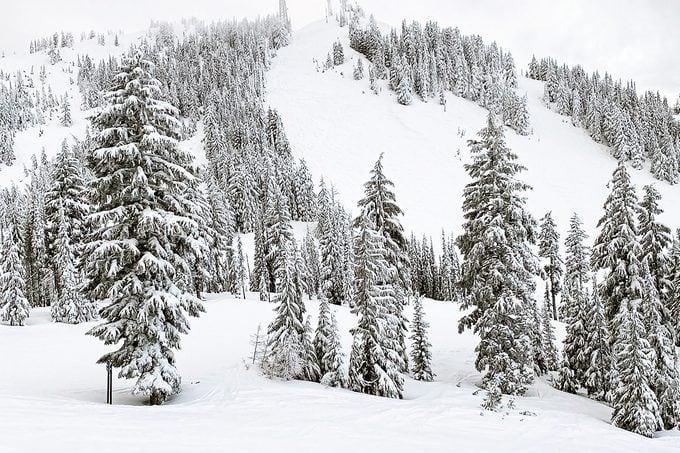
A second avalanche
Whoomph! It was a sound that nobody who has ever heard it can forget: a massive avalanche. This one was much bigger than the first. Tons more snow came tumbling down the mountain, and before Hurlen- Patano could even turn around, she was slammed in the back by a wall of white. She was tossed over Fuzak’s head and carried another 20 feet downhill. Once again, she was only partially buried; luckily, most of the snow had gone over her body and continued down the hill.
After she freed herself, she looked up the mountain and was terrified to realize that the landscape had been completely transformed. There were massive new mounds of snow where before there had been none at all. All her points of reference had disappeared. Worst of all, there were no signs of Scott, Fuzak, or Kay. And Humphreys hadn’t reappeared. This time her friends had truly been buried alive.
When Ken Scott heard the roar, he immediately knew the unthinkable was happening: a second avalanche. I’m dead, he thought. While it didn’t budge him from where he’d been trapped, there was so much more snow piled on him—nine feet of it—that his world had gone completely black, completely silent.
That wasn’t the only difference. Now he was totally immobile, and the breathing space he’d cleared was gone. As he lay on his left side, snow pressed on him so heavily that he couldn’t move anything but his eyelids beneath his goggles and his toes inside his boots. He couldn’t even twitch a finger, let alone move his right arm as he’d been able to before. It was as if he’d been paralyzed, cemented in snow. Even worse, he couldn’t expand his chest enough to take a full breath. He gasped for small gulps of air.

Still, he knew what he had to do to try to survive a second time. First, he shut his eyes—he preferred seeing images in his mind to the empty darkness that surrounded him. He created a mental checklist of what he was still wearing, from head to toe. Hat, goggles, poles, gloves, boots, skis. That means there’s nothing on the surface for rescuers to see.
What about his friend Rebecca? Was she okay or was she buried too? He knew the patrols had no idea where they’d been skiing. She was the only person who could locate him.
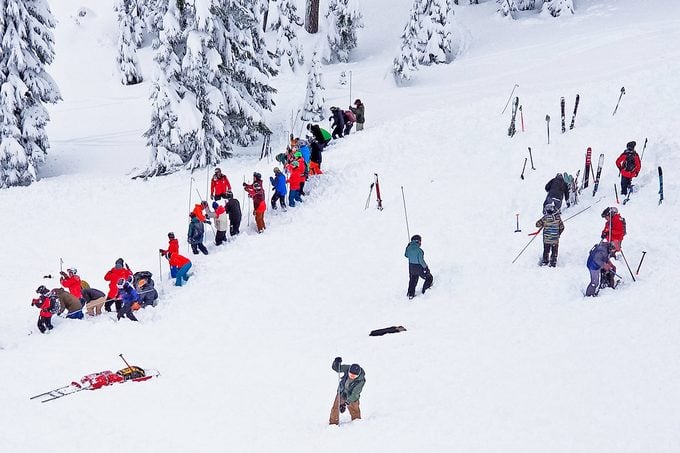
He also knew his chances of survival were small. He’d have a 90 percent chance of living if rescue came within 15 minutes, but only about 30 percent if he lay under the snow for 30 minutes. About three-quarters of avalanche victims die from asphyxia or suffocation.
Don’t miss this story about a teenager who saved a hiker that fell 75-feet off a mountain cliff.
Gasping for air
He tried to fight back panic, but when he thought of his family—of his wife, Ruth, and his daughter, Tash, and the grandkids—he felt helpless, then doomed. This was not the way he wanted to die.
His training had taught him that panicking was not only useless, but dangerous. It used up valuable air. Yet he couldn’t control his fear. He let out a mighty, anguished scream that no one would hear: “AHHHHHHHHH!”
Hurlen-Patano unzipped her parka and pulled out her phone. She didn’t have the number for ski patrol headquarters, but she did know some staffers’ numbers. She called Ernie Silva, who happened to be a friend of Scott’s.
“Hey! Ruby!” he answered, using his nickname for her. “Long time, no see. How—”
She cut him off. “There’s been an avalanche on 16-to-1, and Ken is in it. Bring help!”
Word spread quickly, and soon Silver Mountain’s patrols and skiers were heading to the avalanche site with shovels and ten-foot poles with which they could probe for buried skiers. Not waiting for them, Hurlen-Patano clambered over piles of snow to where she thought she had seen Scott and Fuzak before the second avalanche. Alone on the mountainside, she used her gloved hands to dig frantically at the hard-packed snow. Her friends’ lives depended on her.
Encased in the avalanche, Scott drifted between terror and panic. His rib cage compressed, he could take only tiny breaths, using his diaphragm to help him force in air. He fought to stay positive by focusing on his breathing.
But then he’d try to move his head or a finger, and when he couldn’t, he’d panic again. With so much more snow on top of him, he feared ski patrols wouldn’t be able to locate him. His time was ticking away. He thought of his tight-knit group of friends who called themselves “the boys”—three of whom were world-class skiers who had lost their lives in a massive avalanche at Tunnel Creek in Washington state in 2012. This is the end, he thought. I’m going to join the boys.
Ten minutes after the second avalanche, the slope was abuzz with some 50 rescuers, including red-coated ski patrols as well as volunteer skiers. Like a commander marshaling her troops, Hurlen-Patano stayed calm and pointed out where she thought her friends were buried. Rescuers formed a horizontal line along the slope, each standing just two feet apart, and inserted their probes down into the deep, chunky snow, hoping to hit and locate the buried skiers. A first responder stood above the probe line and repeatedly called out: “Probe right! Probe center! Probe left! Step forward!”

Forty minutes into the search, a rescuer shouted, “A strike!” Bill Fuzak, unconscious but alive, was dug out of more than nine feet of snow. Seeing his location, Hurlen-Patano had a better idea of where Scott might be buried. She pointed to a spot some ten feet farther up and, pumped with adrenaline, screamed at the rescuers, “There! Move there! Faster!”
Scott, struggling to breathe, was frustrated. He knew that his 30-minute survival window had come and gone, and he had resigned himself to death. And, yet, he wasn’t dying. Why was this dragging on so long? But a new sensation reassured him. It was a feeling of warmth that he knew was a sign of hypothermia. I’ll be asleep soon, he thought, and this hell will be over.
A miracle on the slopes
Then he felt a slight pressure on his right hip. A probe? He anxiously prayed to feel it again. A minute passed, then two. Nothing. He’d been trained how to use a rescue probe and he knew that if a rescuer hits something, they leave the probe in place as a marker. But the probe was gone and his flicker of hope vanished.
They’ve moved along the grid, he thought. My one-in-a-million chance. He felt himself fading away.
Suddenly, a vibration. The pressure on his body seemed to be changing. Was that the sound of shovels hitting snow? He started shouting, hoping that anyone standing above would hear.
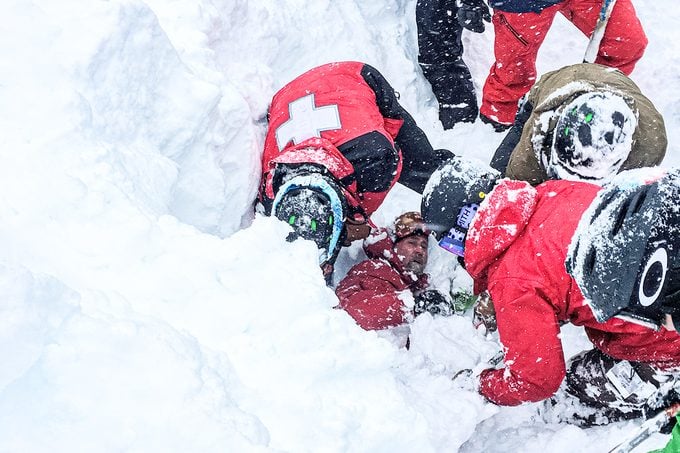
It took rescuers five minutes to dig through the nine feet of snow and uncover Scott’s face, goggles still on. He gulped in deep breaths of fresh air and saw the gray sky above, along with 30 or 40 people standing over him smiling, while others continued to dig him free.
He couldn’t believe it. He had survived two avalanches.
As his arms were freed, he spotted Hurlen-Patano among his rescuers and pulled her down on top of him, almost squeezing the breath out of her. “Ken, you’ve got to let go,” she told him as joy and relief filled her. “We have to get you out of here and get you help.”
He smiled and continued hugging her. “I can’t let go.”
While Ken Scott, Bill Fuzak, and Warren Kays survived, three others, including Carl Humphreys, lost their lives. Scott suffered no major injuries, although he and Hurlen-Patano have suffered from a form of post-traumatic stress syndrome and received counseling to deal with it. His love of skiing undiminished, just nine days after his rescue, Scott was back skiing on Silver Mountain.
